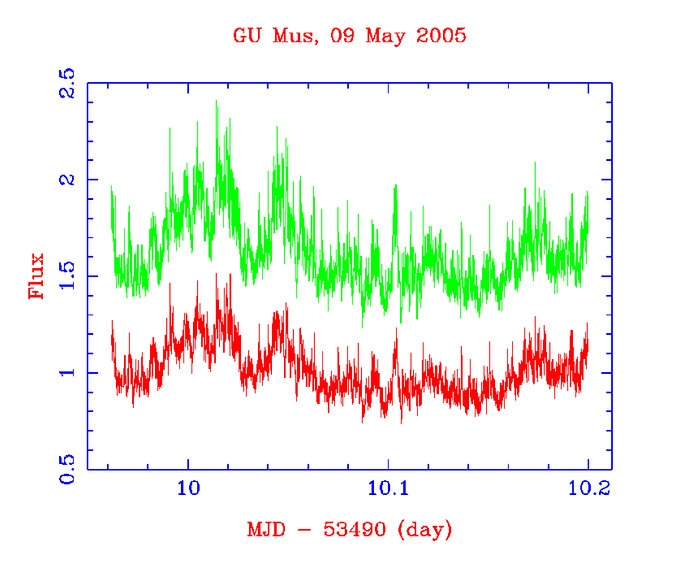Light curves of the black-hole GU Muscae
Early scientific highlight from the first few nights of the ULTRACAM observing campaign on the Very Large Telescope: light curves in the i''- (red) and g''-band (green) of the quiescent black-hole X-ray transient GU Muscae. This object consists of a black hole in a 10-hour orbit with a normal solar-like star. The black hole is surrounded by an accretion disc of material transferred from the solar-like star. As this material accretes onto the black hole, energy is released, and this is evident from the large-amplitude flares visible in the light curves. What was not expected, however, is the series of sharp spikes that can be seen, and which are separated by approximately 7 minutes. Such a stable signal must be tied to a relatively stable structure in the accretion disc.
Crédito:ESO
Sobre la imagen
| Identificador: | eso0520b |
| Tipo: | Mapa |
| Fecha de publicación: | 9 de Junio de 2005 |
| Noticias relacionadas: | eso0520 |
| Tamaño: | 2371 x 1919 px |
Sobre el objeto
| Nombre: | GU Muscae |
| Tipo: | Milky Way : Star : Type : Exotic : X-Ray Binary Milky Way : Star : Evolutionary Stage : Black Hole |
| Distancia: | 17000 años luz |
| Categoría: | Quasars and Black Holes Stars |
